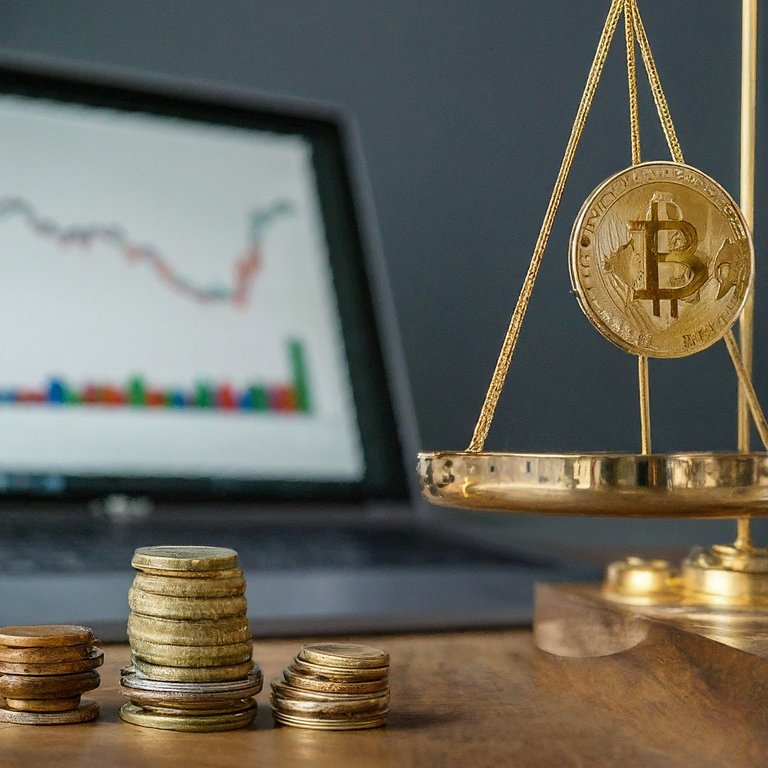
Have you ever heard someone talk about "Bitcoin halving" and felt completely lost? Fear not, my friend. This blog is here to break down this mysterious concept in a way that's easy to understand, even if you're new to the world of cryptocurrency.
Imagine Money You Can't Print More Of
Think about regular money. Governments and banks can create more whenever they want. This can lead to inflation, which basically means things get more expensive over time. A loaf of bread that cost $1 yesterday might cost $1.10 tomorrow. Yikes!
Bitcoin is different. It's a digital currency designed by a mysterious figure named Satoshi Nakamoto. One of the key things that makes Bitcoin special is that there's a limit on how much of it can ever exist – just 21 million bitcoins. That's it. No more, no less.
The Bitcoin Mine: Not Your Average Pickaxe
So, how do new bitcoins get created? This is where things get interesting. Unlike mining for gold or diamonds, Bitcoin mining involves using powerful computers to solve complex math problems. The first computer to solve the problem gets rewarded with a certain amount of new bitcoins.
This process is called "mining" because it's similar to miners uncovering new resources. But in the Bitcoin world, the miners are uncovering new coins, not gold nuggets!
The Halving: A Built-In Slowdown
Now, here's where the halving comes in. Remember how miners get rewarded with new bitcoins for solving those math problems? Well, Satoshi built a feature into Bitcoin's code that cuts this reward in half roughly every four years. It's like putting a limit on how many new bitcoins miners can dig up each day.
Think of it like this: Originally, miners might have been rewarded with 50 shiny new bitcoins for their work. After the first halving, that number dropped to 25. The most recent halving, in May 2020, brought the reward down to 6.25 bitcoins. The next one is coming up in April 2024, and it will cut the reward in half again! This process continues until all 21 million bitcoins are mined, which isn't expected to happen until around the year 2140.
Why Did Satoshi Do This?
So, why did Satoshi create this system with the halving? Here's what we believe:
- Fight Inflation: Just like we talked about with regular money, Satoshi wanted to prevent inflation with Bitcoin. By limiting the total supply and slowing down the creation of new coins, Bitcoin becomes more scarce over time. Think of it like a rare gem – its value might go up because there are fewer of them around.
- Keep Miners Happy: Mining all those complex math problems takes a lot of energy and powerful computers. The reward in new bitcoins is what keeps miners going. The halving makes sure that mining stays profitable for them in the long run. Even though they get fewer bitcoins per block, these bitcoins could potentially be worth more in the future due to scarcity.
Does the Halving Make the Price Go Up?
This is a big question that even experts debate. Historically, there have been periods where the price of Bitcoin went up significantly after a halving event. Some people believe this is because there are fewer new bitcoins being created, driving up the price like a rare collectible. Others argue that it's just the market reacting to the news.
The Big Takeaway: A System Built to Last
The Bitcoin halving is a key part of what makes Bitcoin unique. It creates a predictable pattern of scarcity, which could influence both the price and the health of the Bitcoin network in the long run.
Ready to Dive Deeper?
If you're curious to learn more about the Bitcoin halving and the world of cryptocurrency, here are some resources to check out:
- "Investopedia: Bitcoin Halving: explains the halving in more detail. Link
- "CoinMarketCap: Bitcoin Halving Explained: Link offers another perspective on the halving's impact.
Remember, the world of cryptocurrency is constantly evolving. This blog is just a starting point to help you understand this fascinating concept. Keep exploring, keep learning, and who knows, you might be the next crypto whiz.